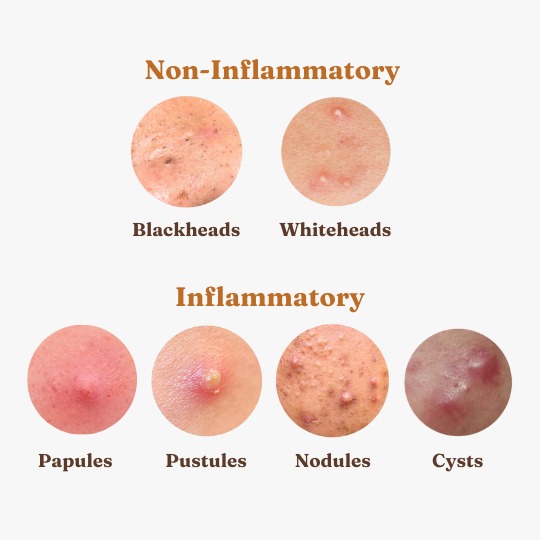
Acne is one of the most commonskin concernsamong teenagers, affecting up to 80% of adolescents worldwide. While breakouts are not life-threatening, they can significantly impact a teenager’s self-esteem and social confidence. Many young people struggle with embarrassment, anxiety, or even depression as a result of persistent acne.
This article explores the causes of acne in teenagers, the standard treatment options, and how modern technologies such as targeted UVB phototherapy are providing new possibilities in acne management.
The teenage years bring about rapid hormonal changes. Hormones stimulate sebaceous glands to produce more oil, which mixes with dead skin cells and bacteria, clogging pores and leading to pimples.
Several factors contribute to acne:
Hormonal fluctuations: Higher levels of androgens increase sebum production.
Genetic predisposition: Teens with a family history of acne are more likely to develop it.
Skin bacteria: Cutibacterium acnesthrives in clogged pores, triggering inflammation.
Diet and stress: Sugary foods, dairy, and stress can make acne worse in certain individuals.
Cosmetic products: Heavy or oily creams and makeup may contribute to clogged pores.
Blackheads (open comedones)– visible pores blocked with sebum and debris.
Whiteheads (closed comedones)– small bumps under the skin.
Papules and pustules– inflamed pimples, sometimes filled with pus.
Nodules and cysts– deeper, painful lesions that may cause scarring.
Recognizing the type of acne helps in choosing an appropriate treatment strategy.
Products containing benzoyl peroxide, salicylic acid, or sulfur are often first-line solutions for mild acne.
Topical retinoids regulate skin cell turnover.
Topical or oral antibiotics reduce bacteria and inflammation.
Hormonal therapy may be used for teenage girls with hormonally-driven acne.
Isotretinoin is reserved for severe, treatment-resistant acne.
Dermatologists may recommend chemical peels, extractions, or laser/light therapies to improve skin condition.
In recent years, light-based treatments have gained attention for acne management. Blue light and UVB light, in particular, have shown promising results in reducing acne-causing bacteria and calming inflammation.
How it works: UVB light penetrates the skin, targeting overactive sebaceous glands and bacteria that trigger acne.
Advantages: Non-invasive, drug-free, and suitable for patients who cannot tolerate long-term oral antibiotics or isotretinoin.
Applications: Often used as a complementary treatment for moderate acne, helping reduce flare-ups and improve skin clarity.
Our company’s YK6000A Portable 308nm UVB Phototherapy Device was designed primarily for dermatological conditions such as psoriasis, vitiligo, and eczema. However, emerging clinical evidence also suggests that 308nm UVB light can support acne management by:
Reducing inflammation: UVB targets immune responses in the skin that contribute to redness and swelling.
Decreasing bacterial activity: Certain acne-related bacteria are sensitive to UV light, which helps reduce their growth.
Supporting natural healing: Controlled exposure promotes a healthier skin balance without systemic side effects.
Portable convenience: The YK6000A is lightweight and easy to operate, allowing targeted treatment at home or in a clinical setting.
While phototherapy is not a first-line treatment for every teenager with acne, it offers an innovative, non-drug alternative for patients with resistant acne or those looking for supportive therapies alongside conventional treatments.
Gentle cleansing: Wash twice daily with a mild cleanser.
Avoid pore-clogging products: Choose non-comedogenic skincare and makeup.
Balanced diet: Minimize processed sugar and excess dairy.
Healthy lifestyle: Regular exercise, sleep, and stress management reduce acne flare-ups.
Hands off: Picking pimples increases the risk of scars.
Parents and teenagers should consult a dermatologist if:
Acne is painful or spreading.
Over-the-counter remedies do not work after several months.
Scarring is beginning to form.
Acne is negatively affecting confidence or daily life.
A professional can determine whether conventional medication, phototherapy, or a combined approach is best.
Acne may feel like an inevitable part of growing up, but it does not need to control a teenager’s life. With a combination of proper skincare, medical treatments, and new technologies like 308nm UVB phototherapy, teenagers can see meaningful improvements in their skin and overall confidence.
The YK6000A Portable 308nm UVB Phototherapy Device represents an innovative step forward in dermatology—providing a safe, portable, and effective light-based solution that can complement traditional acne treatments.
Clearer skin is possible, and with the right guidance, teenagers can approach adulthood with healthier skin and greater self-esteem.